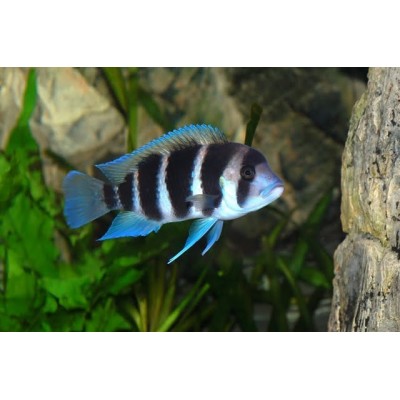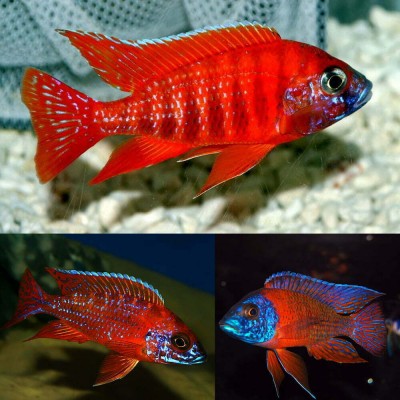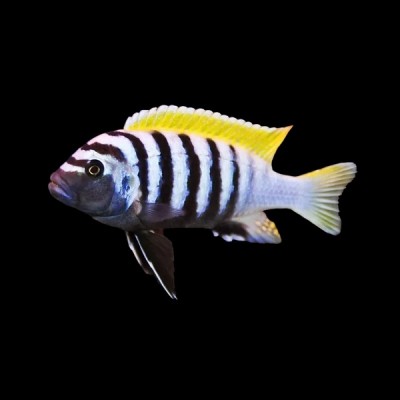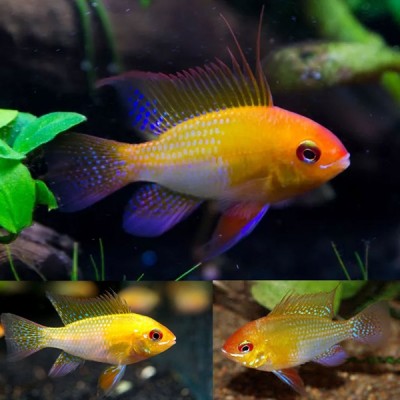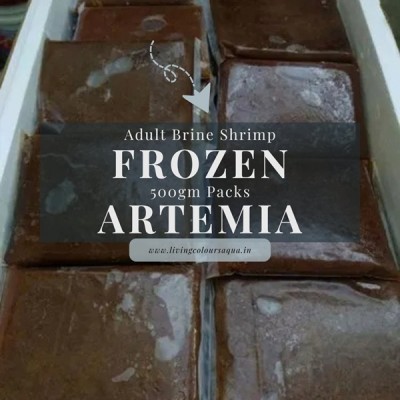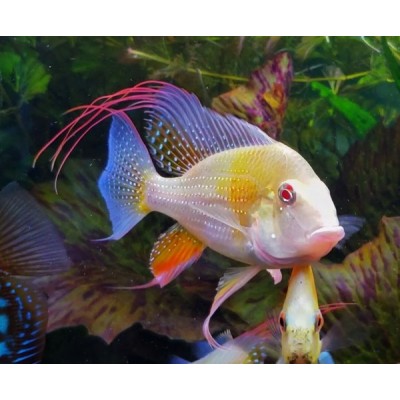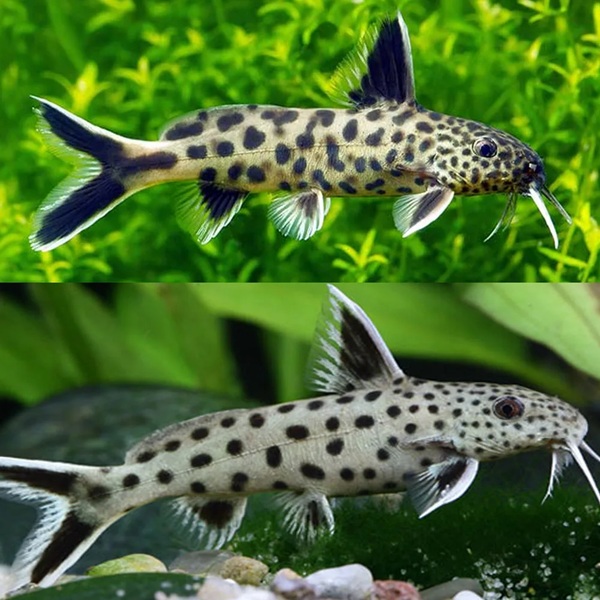
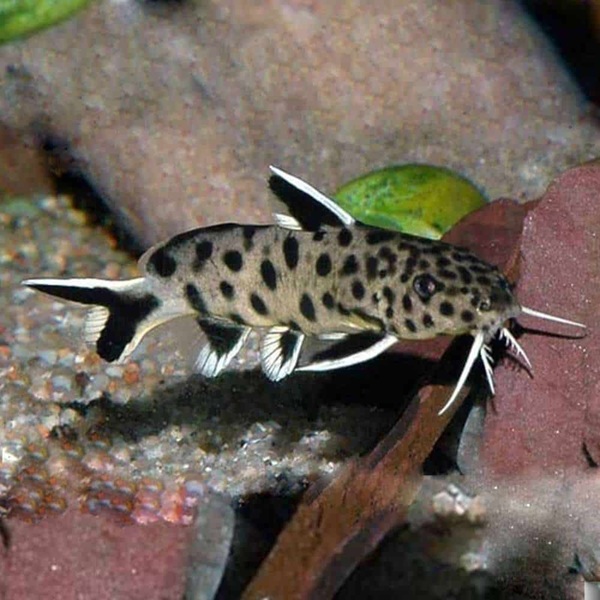
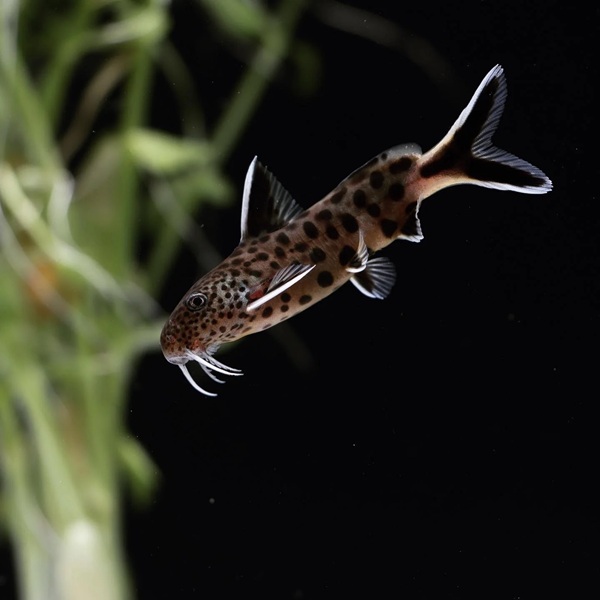



Petricola Catfish – A Hardy and Attractive Aquarium Addition
The Petricola Catfish (Synodontis petricola), sometimes referred to as the Dwarf Petricola or Cuckoo Dwarf Catfish, is a beautiful and peaceful freshwater species native to Africa’s Lake Tanganyika. With its striking spotted pattern, hardy nature, and active personality, this catfish is an excellent choice for aquarists. Perfect for community aquariums and African cichlid setups, the Petricola Catfish thrives in well-maintained environments.
Size and Lifespan
The Petricola Catfish typically grows to about 10–12 cm (4–5 inches), making it ideal for medium-sized tanks. With proper care, these fish can live for up to 10 years or more. Their longevity depends on stable water conditions, a balanced diet, and a stress-free environment.
Ideal Tank Setup
A 150-litre tank or larger is recommended for the Petricola Catfish, as it is an active swimmer and enjoys exploring its surroundings. To replicate its natural habitat:
- Use a sandy substrate or fine gravel to accommodate its bottom-dwelling nature.
- Add rocks, caves, and driftwood for hiding and resting.
- Maintain moderate to strong water flow with efficient filtration.
Water Parameters
- pH Range: 7.5–8.5
- Temperature: 24–28°C
- Filtration: Ensure strong filtration to maintain high oxygen levels and water clarity, as this species comes from Lake Tanganyika’s clean waters.
Compatible Tank Mates
The Petricola Catfish is a peaceful species that thrives in community tanks with similarly hardy fish. Ideal tank mates include:
- African cichlids (particularly from Lake Tanganyika)
- Larger tetras
- Barbs
- Other Synodontis species
Avoid housing them with very small fish, which may be mistaken for food, or aggressive tank mates that could cause stress. Keeping them in groups of three or more allows them to display natural behaviours and reduces shyness.
Feeding and Nutrition
Petricola Catfish are omnivorous and require a varied diet to thrive. Suitable foods include:
- Sinking pellets or catfish wafers
- Live or frozen protein-based foods like bloodworms, brine shrimp, or daphnia
- Occasional vegetable treats such as blanched cucumber
Feed them once or twice daily, ensuring food sinks to the bottom of the tank where they can easily access it. Their scavenging habits also make them helpful for maintaining tank cleanliness.
Breeding and Behaviour
Breeding Petricola Catfish in aquariums is possible, though it can be challenging. These fish exhibit a unique spawning behaviour, sometimes using the eggs of mouthbrooding cichlids to protect their fry, similar to the related Cuckoo Catfish. To encourage breeding:
- Provide plenty of hiding spots and caves for spawning.
- Use a dedicated breeding tank with stable, slightly alkaline water conditions.
The fry are small and delicate, requiring a diet of infusoria or powdered foods in their early stages. As they grow, they can be transitioned to crushed pellets and finely chopped frozen foods.
Species Overview
- Species: Synodontis petricola
- Common Name: Petricola Catfish
- Origin: Lake Tanganyika, Africa
- Diet: Omnivorous
- pH Range: 7.5–8.5
- Temperature: 24–28°C
- Max Size: 10–12 cm (4–5 inches)
- Tank Size: Minimum 150 litres
FAQs About Petricola Catfish
- How large do Petricola Catfish grow?
“They reach an average size of 10–12 cm, making them ideal for medium-sized tanks.” - Are they suitable for cichlid tanks?
“Yes, they thrive with African cichlids, particularly those from Lake Tanganyika.” - What do Petricola Catfish eat?
“They enjoy sinking pellets, live or frozen protein-based foods, and occasional vegetables.” - Do they need to be kept in groups?
“Yes, keeping them in groups of three or more helps them display natural behaviours and reduces shyness.” - Can they be bred in aquariums?
“Yes, though it can be challenging. Provide caves and stable water conditions to encourage spawning.”
Add a Petricola Catfish to Your Aquarium Today!
Bring the charm and elegance of the Petricola Catfish to your aquarium. With its beautiful spotted pattern, hardy nature, and compatibility with cichlid tanks, this species is perfect for aquarists seeking a unique bottom-dweller. Order yours today and enjoy the benefits of this fascinating fish!
- Stock: Out Of Stock
- Model: CUCKOO CATFISH
- SKU: IMPORTED

